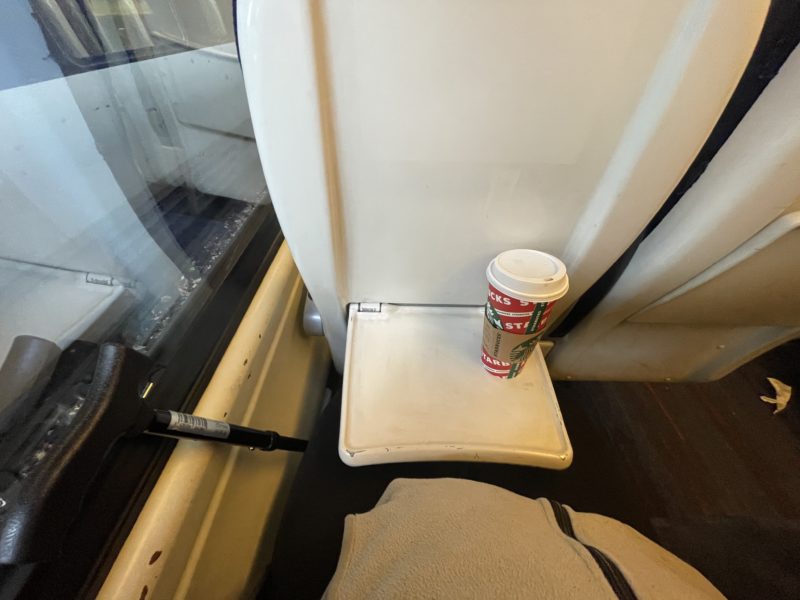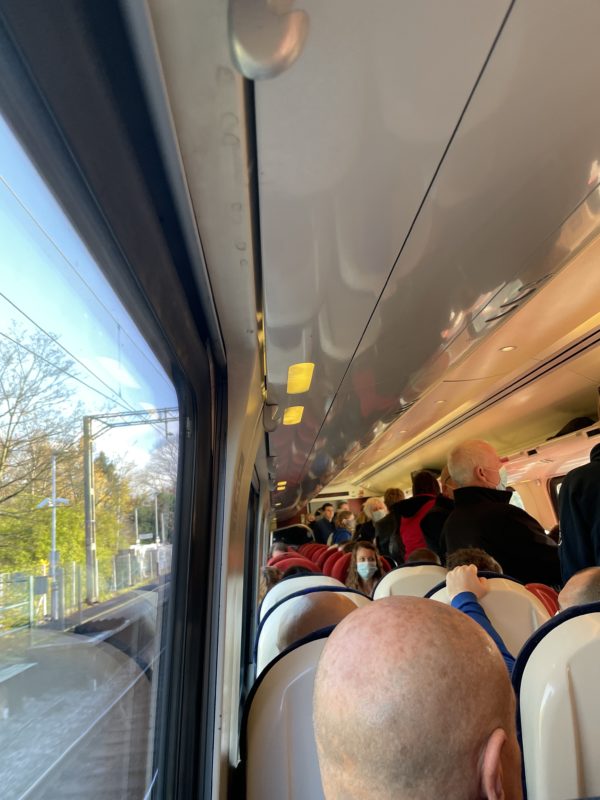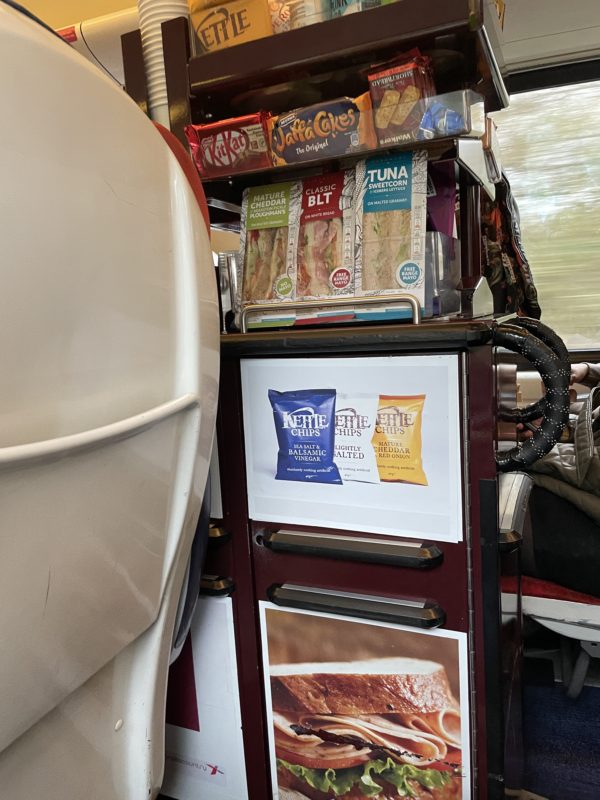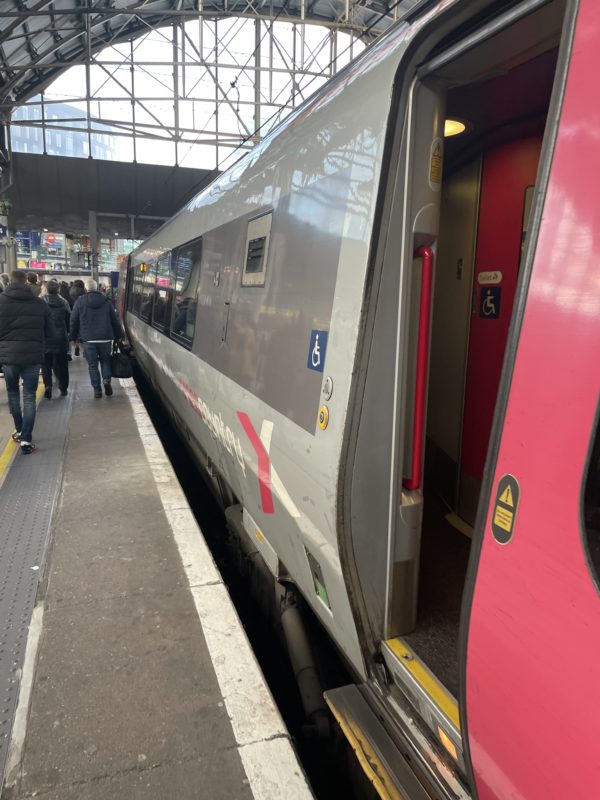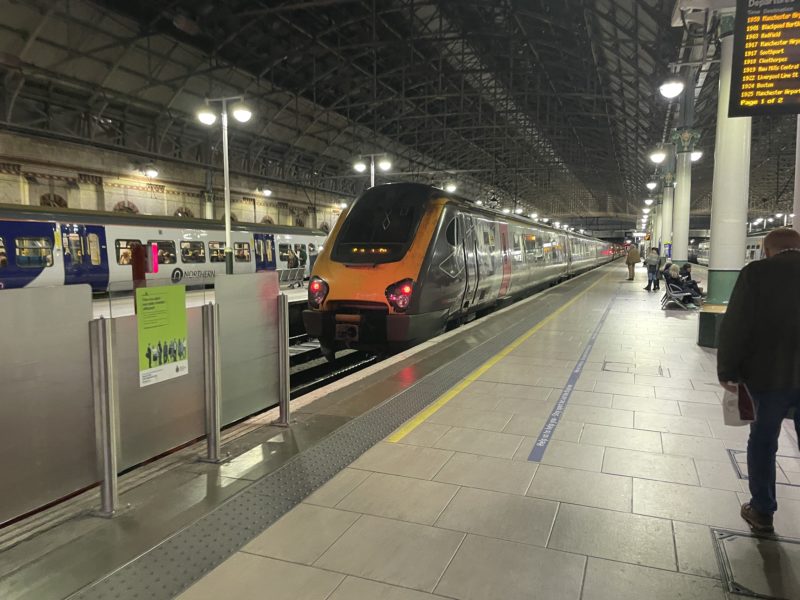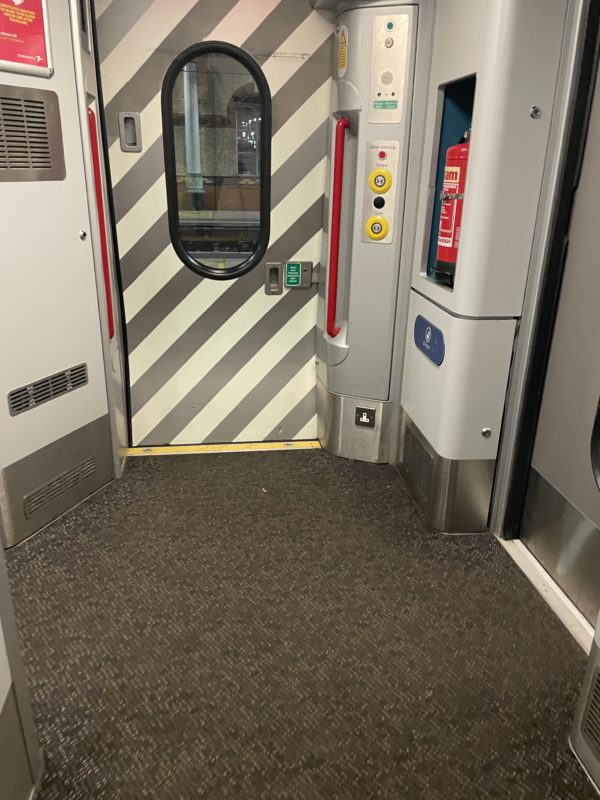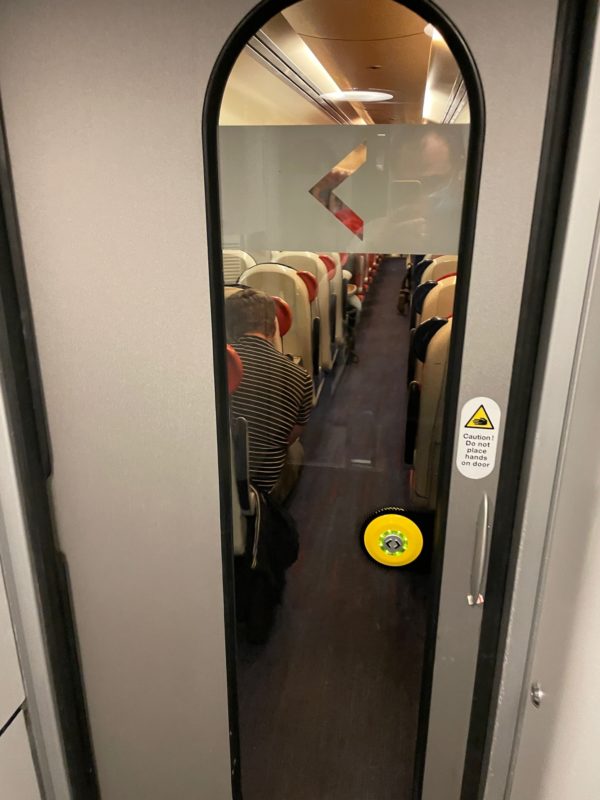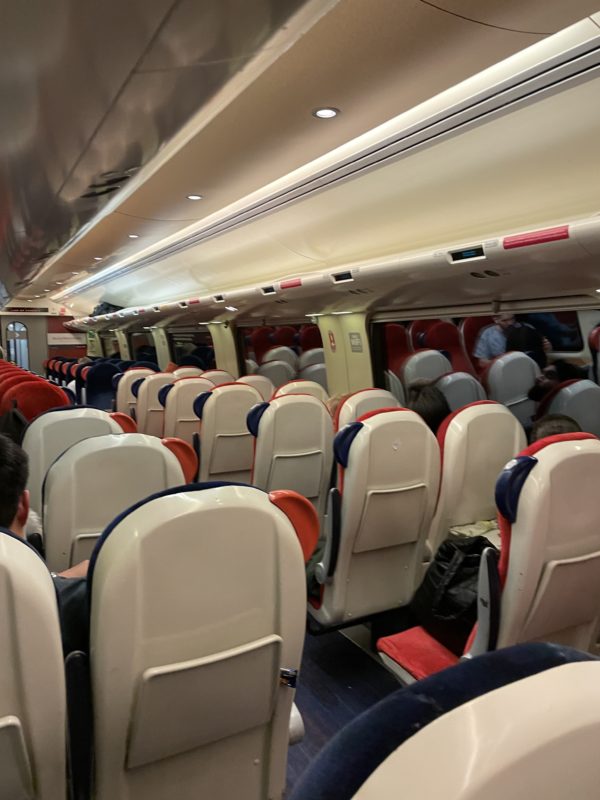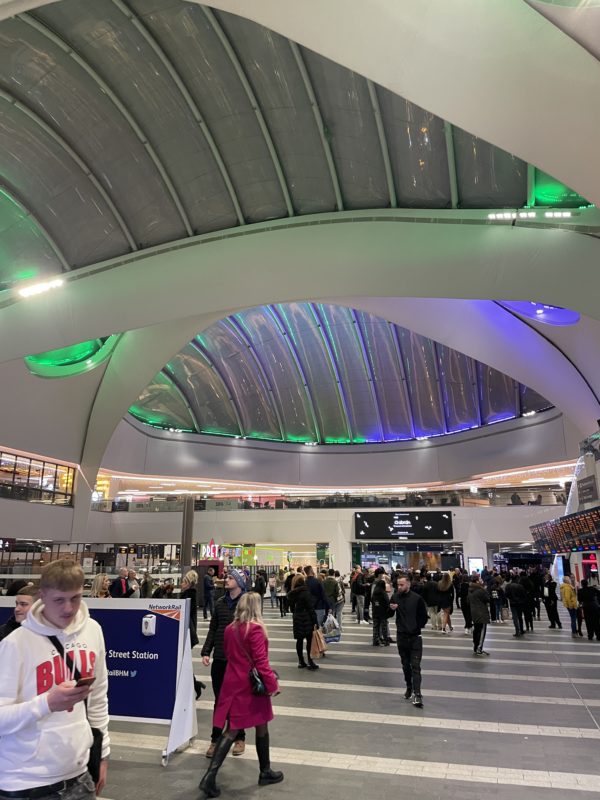Time for a transport check to see how mad things are in the world, as I turn my eye to CrossCountry Trains on a Trip to Manchester.
And how in some cases, if building it, they will come – but at what price passenger comfort?
Booking
I took the 10:57 from Birmingham New Street to Manchester Piccadilly. I booked this the day before, with split-ticketing enabled (saving around £4 of the off-peak fare…. £4 is £4. although apps like Trainsplit and Trainpal make this split-ticketing thing a lot easier to deal with.
At least with these methods, the tickets are all issued as QR codes, so it’s a case of “Scan and Go”, as opposed to finding small bits of orange cardboard that can be easily lost.
And speaking from experience, losing small orange cards can get expensive damn fast.
Outbound
The train
CrossCountry uses its Voyager fleet on these routes (made up of Class 220 and Class 221). These are diesel multiple units that… well, the best term would be “their reputation proceeds them”.
From poor seating layouts to the cramped nature of them (due to them having to fit a tilt profile), the experience isn’t hot.
As a mid-morning service, the train was pretty packed at Birmingham New Street as it had come in from Southampton – and it wasn’t getting any better, even with the train made up of two units – a five-car and four-car -giving two first-class coaches and 7 standard class coaches.
The train departed a few minutes late out of New Street but was making up time on the way to Manchester.
Seating
On Voyagers, seating is made up of a mixture of airline-style seating and table seating in a 2-2 formation.
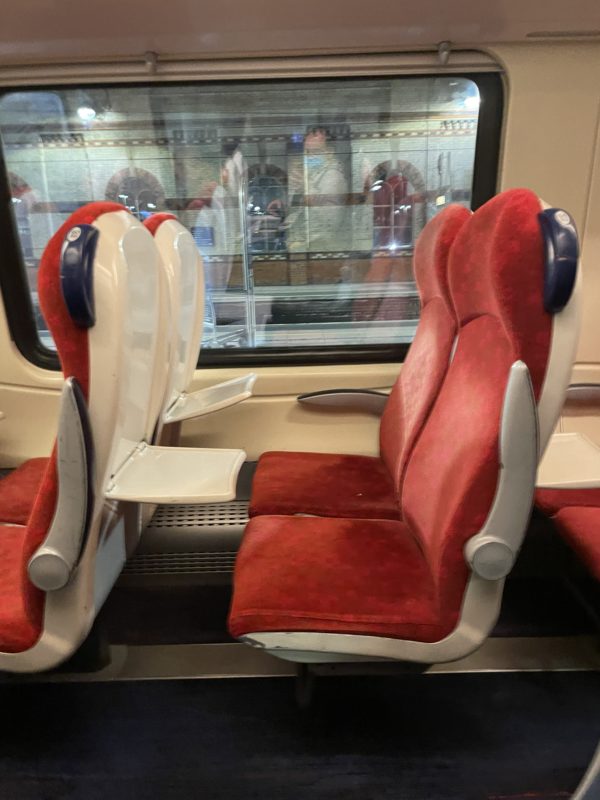
Taken at Manchester Piccadilly
There is power at the seat provisioned in the form of a 1 x 13amp socket.
No provision for USB power has been made, and the remains of the in-train audio system are still present.
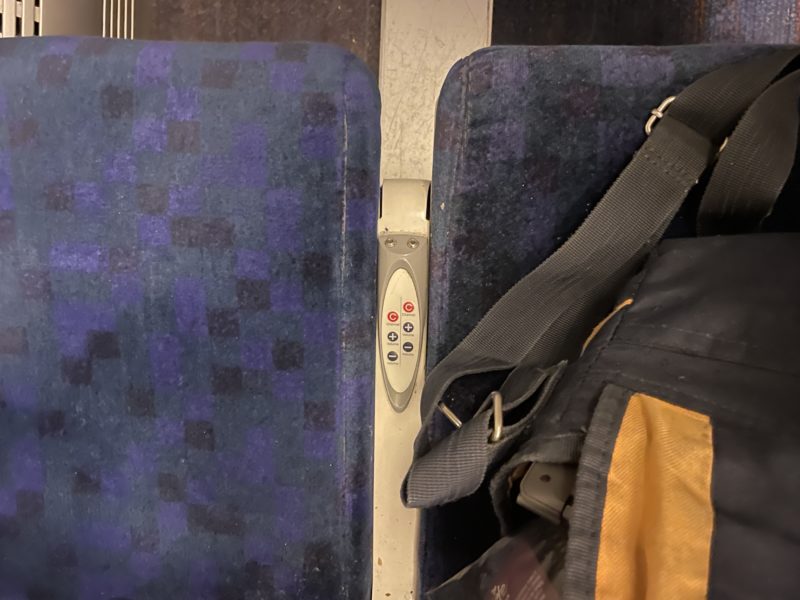
It was a nice idea at the time
There are limited table seats – making them a premium if you want to work on one, or if you want to sit as a group of four/a family. Like nearly all trains, the seating is fixed, so it can’t rotate in the direction of travel.
The tray table is more than a little tight – not much room for more than a cup of coffee or a laptop – it’s a life choice which one you want.
However, whilst there may have been nine cars on this train – it managed to soak up all the passengers – to the point it was standing room from Stoke on Trent onwards.
Catering
CrossCountry offers a trolly service on their trains – although, by Stafford, it was becoming hard for the trolly to move freely on the train, and by Stoke on Trent – impossible to carry out a service
Wi-Fi
Wi-Fi is provided on the train – something of a necessity due to the film used to coat the windows, which has more than a nasty habit of blocking mobile phone signals. It’s limited to 70Mb per session before connectivity is throttled down.
Arrival
The train made to it Manchester Piccadilly early. There was a wait to exit the train, to allow those who had been standing off, and people not being patient.
At Manchester Piccadilly, the gate line was active. The supplied 2D barcode on my ticket provided adequate information for the barrier to open and let me onto the station concourse.
At Manchester Piccadilly, there are three “free” city buses provided to get you from A to B. It’s a useful tool for those who aren’t familiar with the city centre but know the destination they’re heading to.
Return service
Due to me running more than a little late (I was spending time with Rotolight and learning about some very nice new toys), I took a train an hour later than I planned.
View this post on Instagram
View this post on Instagram
View this post on Instagram
On the plus side, I paid for a pair of cheap day return tickets rather than a cheap day return combined with advance tickets – a helpful thing in these times. That means I can use pretty much any off-peak train as needed to get from Manchester to Birmingham.
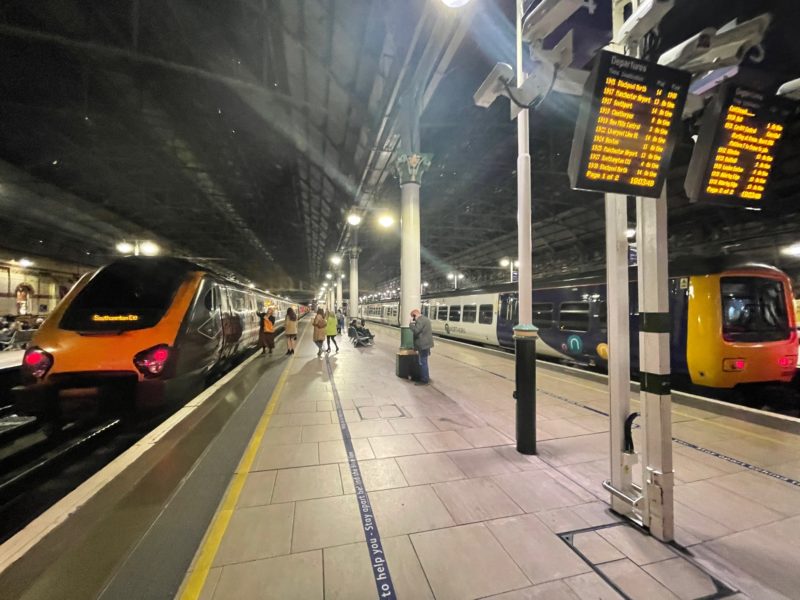
Voyagers on the left, Class 323 on the right.
And Saturday is an off-peak day. Much to the chagrin of train companies sometimes who would prefer to make everyone book in advance.
The train
The train was made up of two Voyager units again – this time 8 cars (Class 220 trains) formed the Manchester to Southhampton leg. I’d be joining the train between Manchester Piccadilly and Birmingham New Street.
Again, the train packed out at Manchester – thankfully, the number of standees were limited compared to the outbound journey, with most of them gone by Macclesfield.
Face coverings were minimally worn (compared to the outbound leg where plenty was being worn. Whilst the UK Government advice is to wear a face-covering in crowded and enclosed spaces), that advice was hardly being followed.
Seating
Again, the same seats that were present on the outbound Voyager. Again, tight as anything thanks to the profile of the train.
The journey
With the train making stops at Stockport, Macclesfield, Stoke-on-Trent, Stafford, Wolverhampton and Birmingham New Street, this was a mirror of the outbound journey.
The train emptied as it stopped at Maccceslfeild (to the point that any standing passengers had seats), with the majority of people exiting at Stoke-on-Trent. There was a 5-minute delay outside Stafford to allow a late-running train to pass – which in turn made our train late for the rest of the journey. There was a fair amount of passengers joining the train at Wolverhampton (after all, sometimes you need to escape one city to another city for a night out), with the train arriving into New Street picking up more delays.
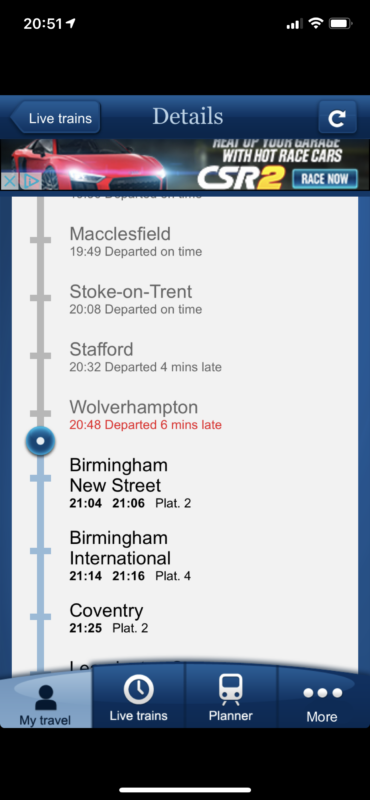
And if someone could teach the National Rail Enquiries team how to update an app, that would be swell.
Wi-Fi
Again – on-train wifi was provisioned and free at the point of registration.
The speeds are hardly anything to phone home about sadly.
Catering
The catering trolley managed to make one pass between Manchester and Macclesfield, with a crew change due at New Street.
Arrival
Whilst the train arrived a few minutes later than scheduled, I was positioned for an easy exit to the escalators and the exit from the station.
Again, Birmingham New Street was busy for a Saturday night, with ticket barriers in use. Thankfully for passengers, there’s plenty of onward travel options – be it bus or local trains (although not trams… that’s getting to be more than a sore point locally).
If you build capacity, they will come… but ensure you can meet the demands
On the outbound segment especially, capacity was tight – let us make no mistake when people are filling the aisle to have somewhere to stand on a train. It was akin to travelling at peak, rather than off-peak.
Routes, like Crosscountry, need one thing, however: investment – Something that CrossCountry has lacked since the Voyagers arrived, and the operating contract was handed over to Arriva/DB, where growth has been limited to taking out the onboard shops and tightening the seating pitches.
CrossCountry has come a long way since the days of “Operation Princess”, but it needs to evolve (the use of diesel-powered trains on a fully electrified route between Coventry and Manchester boggles belief as we move away from fossil fuel sources).
That investment (be it in displaced rolling stock from the Midland Mainline or band new Dual-Powered stock) would help, along with the capacity to carry passengers.
And if the trains are getting loaded to crush capacity as people travel again, something needs to be done.
Alas, it’s going to cost money – something the Government seems to be hesitant in spending right now – even if the latest rail review tries to paint a positive picture.
Welcome to Economy Class and Beyond – Your no-nonsense guide to network news, honest reviews, featuring in-depth coverage, unique research, as well as the humour and madness as I only know how to deliver.
Follow me on Twitter at @EconomyBeyond for the latest updates! You can follow me on Instagram too!
Also remember that we are part of the BoardingArea community, bringing you the latest frequent flyer news from around the world.


